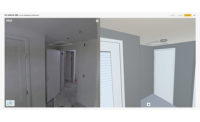The directors of the Texas Aggregates & Concrete Association (TACA) are concerned and dismayed regarding the information contained within—and the lack of editorial oversight before printing—the article “Google Tool Reveals Threats Posed by Building Materials” (ENR 11/9/15 p. 50).
First, this type of information already exists within the industry in the form of Environmental Product Declarations (EPD). Not only are these declarations publicly available, they are vetted by industry experts and have internationally agreed-upon values and reporting structures. They are fully transparent, and the development of the Product Category Rules (PCR) that develop the EPDs are open for public comment and participation. It is strange that the article does not at all mention these well-developed and published documents, as a means of comparison, or the fact that the concrete industry is taking a proactive approach to consumer, community and environmental concerns.
Second, the article quotes a highly prejudicial statement [by Jim Vallette, research director at the Healthy Building Network]: “The problem is that manufacturers only go to a certain degree of disclosure, so we’ve gone to [the patents themselves] and other forms of deep research to find out if carcinogens are present in these substances—sometimes in the parts per billion.” However, the article provides no reply to contradict that statement, which is clearly made to pursue a certain agenda.
A simple rebuttal to this would be that almost every commercially consumed material has some level of carcinogen contained in the parts per billion but, when combined with other materials, is either absorbed or encapsulated during the manufacturing process, rendering that original carcinogen inert in the final product. This is exactly the case with concrete, and yet this is never mentioned within the article or the Flux database, thus providing the public with incorrect information.
Third, the manner in which the data is presented—by the Flux database and as a graphic within the article—gives absolutely no context of what the values represent. To a member of the general public (the intended audience, based on Flux’s comments), it would not be difficult to believe how they would view the data and very quickly draw the dangerous conclusion that a ready-mix concrete (3,000- to 4,000-psi fly ash) is somehow linked to cancer and the percentage of 31.15% or even a cause of cancer. It is a highly dangerous value to present, with absolutely no context. Yes, there is a mention that those percentages are based on total product weight, but, to the general public who has no knowledge of mix designs, this value is highly prejudicial and gives the completely wrong impression.
Finally, no comment or response from the concrete industry is included in this article. Since ENR relies so very heavily upon the concrete industry for support within the construction industry, I am confused as to why such a negative article would be presented.
Richard S. Szecsy, PhD, PE, FACI
President,
Texas Aggregates & Concrete Association,
Austin, Texas






Post a comment to this article
Report Abusive Comment